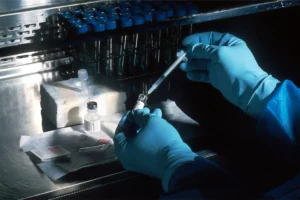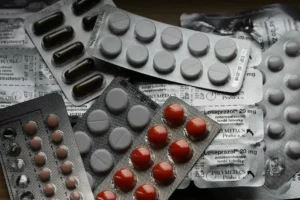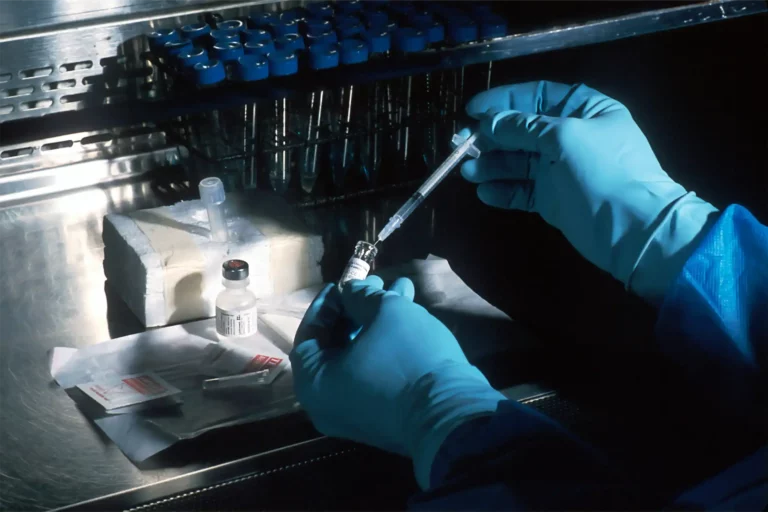The preclinical research phase in the drug development process involves the extensive evaluation of candidate compounds before clinical trials. Through a combination of in vitro, in silico, in chimico, and/or in vivo studies, researchers assess the pharmacological activity, safety, and toxicology of potential drugs. Robust analytical strategies at this stage are critical for generating the quality data needed to support regulatory submissions and accelerate market entry. Early investment in analytical capabilities can significantly reduce drug development failure rates and shorten timelines.
Analytical Method Development in Preclinical Drug Research
Analytical method development in drug discovery refers to the process of designing, optimizing, and validating analytical techniques that can accurately characterize a drug candidate before it enters clinical trials. These methods are used to assess identity, purity, potency, and stability of drug substances, crucial parameters for understanding how a compound behaves in biological systems and for making decisions on formulation, dosing, and safety.

Key steps in the process include:
- Defining the analytical target profile (ATP): Establishing the purpose of the method and the required performance characteristics.
- Selecting the analytical technique: Choosing the appropriate tools (e.g., chromatography, spectroscopy, electrophoresis) based on their sensitivity, selectivity, and the nature of the compound and matrix.
- Method design and optimization: Setting initial conditions and assessing how environmental factors like temperature or pH affect method performance to ensure robustness and reliability.
- Method validation: Carrying out preliminary tests to confirm accuracy, precision, specificity, detection limits, and reproducibility according to regulatory standards.
- Documentation and transfer: Preparing full documentation to ensure method repeatability and support audits or technology transfer.
By establishing solid analytical foundations early, risks can be mitigated in the drug development pipeline, when the cost of failure becomes exponentially higher.
Advanced Techniques in Early Drug Development: LC-MS/MS and UPLC-MS/MS Applications
Modern drug development research relies heavily on advanced techniques for characterizing compounds and monitoring pharmacokinetics. Among these, Liquid Chromatography–Tandem Mass Spectrometry (LC-MS/MS) and Ultra-Performance Liquid Chromatography–Tandem Mass Spectrometry (UPLC-MS/MS) have become indispensable in preclinical research due to their superior sensitivity, selectivity, and throughput.
Key applications of these techniques in early drug development include:
- Compound screening and characterization
Rapid analysis of chemical libraries to identify lead compounds and assess their identity, purity, and chemical-physical properties such as solubility and stability.
- Quantitative bioanalysis
Precise measurement of drug and metabolite concentrations in biological matrices, critical for pharmacokinetics and toxicokinetics.
- Drug metabolism and pharmacokinetics (DMPK)
LC-MS/MS is essential for evaluating absorption, distribution, metabolism, and excretion properties, including in vitro metabolic stability and in vivo metabolite profiling.
- Impurity profiling and degradant analysis
Detection and characterization of trace-level impurities and degradation products to ensure compliance with quality and safety standards.
The adoption of LC-MS/MS instrumentation and UPLC-MS/MS enhances the speed and quality of analytical data, enabling faster decision-making in the drug development stages and supporting regulatory filings.
Regulatory Expectations for Analytical Data in Preclinical Studies
To proceed from preclinical to clinical phases in the drug development process, data must meet regulatory standards set by agencies such as the US Food and Drug Administration (FDA) or the European Medicines Agency (EMA). These expectations ensure the safety and reliability of the studies that underpin human trials.

- Compliance with Good Laboratory Practices (GLP)
All preclinical studies must be conducted in compliance with GLP, according to 21 CFR Part 58 in the U.S. and Directive 2004/10/EC in the EU, which mandates rigorous documentation, personnel training, equipment calibration, and quality assurance programs to ensure data integrity.
- Analytical method validation
International Conference on Harmonization (ICH) Guidelines, such as Q2(R2) and the EMA’s Guideline on bioanalytical method validation, define validation parameters for analytical procedures, including specificity, accuracy, precision, and robustness.
- Data integrity and documentation
Structured and comprehensive reporting is essential: validation protocols, analytical study reports, evidence of method performance, and assay metadata. This includes keeping records in accepted formats.
- Preclinical study design
ICH M3(R2) Guideline outlines the toxicological, pharmacodynamic, and kinetic studies required before first-in-human trials. It also stresses the importance of assessing organ-specific and systemic toxicities.
- Electronic submission
The FDA requires the use of the electronic Common Technical Document (eCTD) format, while animal toxicology data must be submitted in the Standard for Exchange of Nonclinical Data (SEND) format. The EMA requires comparable electronic formats to support efficient and standardized review.
Ensuring alignment with regulatory expectations during preclinical research helps avoid delays at the Investigational New Drug (IND) or clinical trial application (CTA) stages.
Designing Analytical Strategies that Accelerate Drug Development
When companies proactively invest in method development, validation, and documentation aligned with international standards, they reduce uncertainty and improve agility across the drug development timeline.
Effective strategies include integrating an analytical approach at the early discovery stages, using advanced platform technologies like LC-MS/MS or UPLC-MS/MS analysis for multiple workflows, and ensuring the adaptability of methods across compounds or dosage forms. Equally important is selecting analytical partners with a proven track record in validation in pharmaceutical quality assurance and regulatory compliance.
Partnering with an experienced CRO can provide access to cutting-edge equipment, regulatory insights, and scalable resources tailored to the challenges of analytical methods in the pharmaceutical industry.

At AMSbiopharma, our analytical services cover the full spectrum of preclinical development, from early method design to regulatory validation. Whether you need support with impurity profiling, bioanalysis, or IND-enabling studies, our team ensures your data is regulatory-ready and built to accelerate your path to the clinic phase.
Contact us to learn how we can strengthen your analytical strategy.
References
Agencia Española de Medicamentos y Productos Sanitarios. Investigación preclínica de medicamentos de uso humano [Internet]. Madrid: AEMPS; 29 abr 2021 [cited 2025 May 22]. Available from: https://www.aemps.gob.es/medicamentos-de-uso-humano/investigacion-preclinica-de-medicamentos-de-uso-humano/
Beccaria M, Cabooter D. Current developments in LC-MS for pharmaceutical analysis. Analyst. 2020 Feb 17;145(4):1129-1157. doi: 10.1039/c9an02145k
Yamashita T, Dohta Y, Nakamura T, Fukami T. High-speed solubility screening assay using ultra-performance liquid chromatography/mass spectrometry in drug discovery. J Chromatogr A. 2008 Feb 22;1182(1):72-6. doi: 10.1016/j.chroma.2007.12.086
U.S. Food and Drug Administration. Good Laboratory Practice for Nonclinical Laboratory Studies. Title 21 CFR Part 58 [Internet]. Washington, D.C.: Electronic Code of Federal Regulations (eCFR); [cited 2025 May 22]. Available from: https://www.ecfr.gov/current/title-21/chapter-I/subchapter-A/part-58
Food and Drug Administration. Q2(R2) Validation of Analytical Procedures: Text and Methodology [Internet]. Silver Spring (MD): FDA; 2024 Mar 6 [cited 2025 May 22]. Available from: https://www.fda.gov/regulatory-information/search-fda-guidance-documents/q2r2-validation-analytical-procedures
European Medicines Agency. Guideline on bioanalytical method validation [Internet]. London: EMA; 2011 Jul 21 [cited 2025 May 22]. Available from: https://www.ema.europa.eu/en/bioanalytical-method-validation-scientific-guideline

